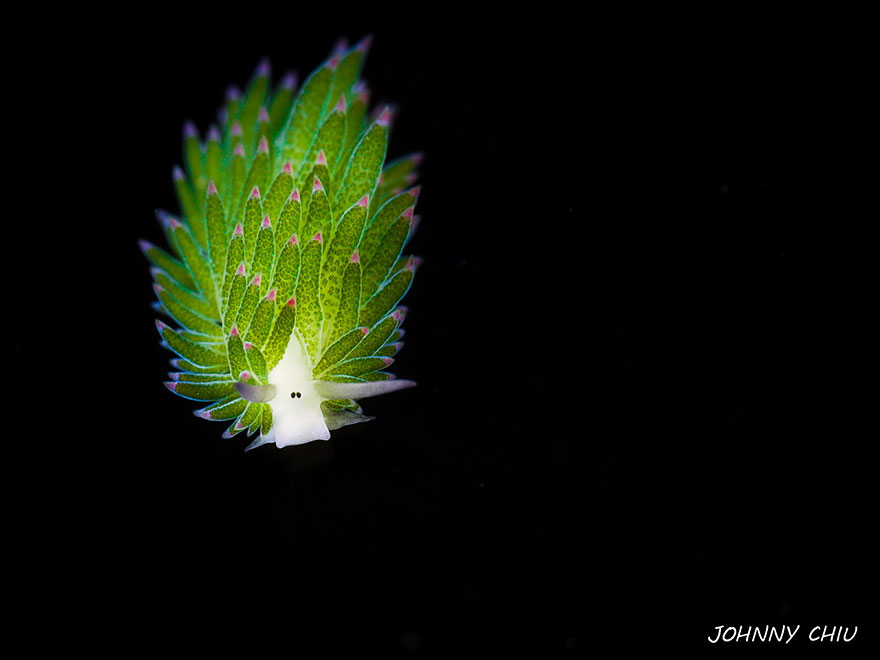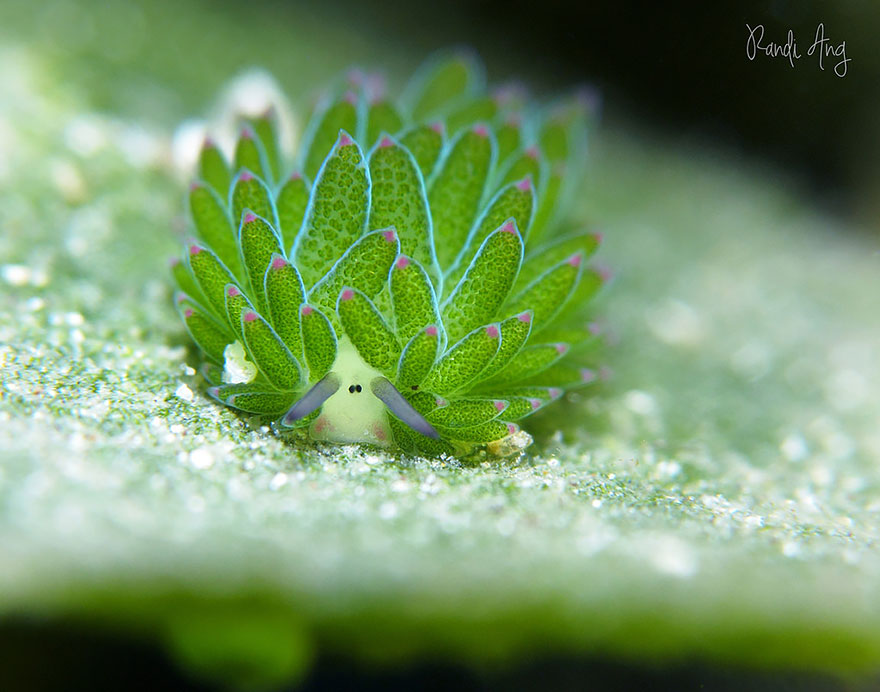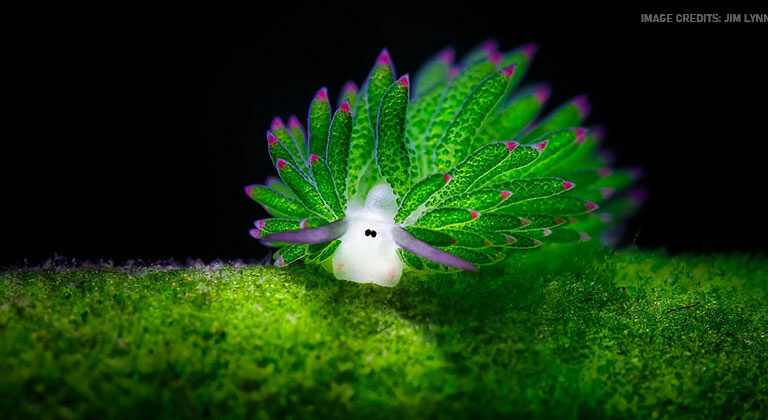The leaf sheep sea slug, also known as Costasiella kuroshimae, is a fascinating and unique creature that lives in the ocean. Unlike other marine animals that rely on hunting or scavenging for food, this sea slug has a secret weapon that allows it to survive in environments where food is scarce: the ability to photosynthesize.
Photosynthesis is the process by which plants and certain other organisms use energy from the sun to convert carbon dioxide and water into organic compounds, such as glucose. This process is typically only seen in plants, but the leaf sheep sea slug is able to do this as well. How is this possible?

The leaf sheep sea slug is able to photosynthesize due to the presence of chloroplasts within its cells. Chloroplasts are organelles found in plant cells that are responsible for photosynthesis. Scientists believe that the leaf sheep sea slug acquired these chloroplasts from the algae it eats. Once ingested, the chloroplasts are not digested, but instead remain functional and continue to photosynthesize within the sea slug’s cells.
This ability to photosynthesize allows the leaf sheep sea slug to survive in environments with limited food sources. Instead of relying solely on hunting or scavenging for food, the leaf sheep sea slug can create its own food through photosynthesis. This gives it a distinct advantage over other marine animals that are dependent on a steady food source.
The leaf sheep sea slug is a small creature, typically measuring only a few millimeters in length. It is often found in shallow waters, such as tide pools and rocky shores, where it can easily access sunlight for photosynthesis. Its body is a translucent green color, and it has a leaf-like shape, giving it its common name “leaf sheep.”

The leaf sheep sea slug is not the only marine animal that can photosynthesize. There are other species of sea slugs, such as Elysia chlorotica, that are also able to photosynthesize. However, the leaf sheep sea slug is unique in that it is able to incorporate chloroplasts into its own cells, rather than simply hosting the algae within its body.
The leaf sheep sea slug is a fascinating and unique creature that defies expectations. Its ability to photosynthesize allows it to survive in environments where other marine animals would struggle. It is a reminder of the incredible diversity and adaptability of life on Earth. The study of this sea slug can provide insights into the evolution of photosynthesis and symbiotic relationships between organisms.
In conclusion, the leaf sheep sea slug is an extraordinary marine animal that has the ability to photosynthesize, a process typically only seen in plants. This allows it to survive in environments with limited food sources and makes it truly one of a kind. Its unique ability is made possible by the presence of chloroplasts within its cells, which it acquired from the algae it eats. The leaf sheep sea slug is not only fascinating but also a subject of ongoing scientific research and understanding of the evolution of photosynthesis and symbiotic relationships.

Here are 10 facts about the leaf sheep sea slug?
- The leaf sheep sea slug is a hermaphrodite, meaning it has both male and female reproductive organs.
- They are able to store the chloroplasts they get from the algae they eat and use them to photosynthesize for several weeks, even without access to sunlight.
- The leaf sheep sea slug’s ability to photosynthesize is not as efficient as that of plants, as it can only produce a small amount of energy.
- They are found in subtropical and tropical areas of the Pacific Ocean, including Japan, the Philippines and the Great Barrier Reef.
- The leaf sheep sea slug is not a common species and its population is not well studied.
- They are known to feed on a variety of algae species, but their preferred food is the green alga Bryopsis.
- The leaf sheep sea slug’s body is translucent green and has a leaf-like shape, giving it its common name “leaf sheep.”
- Researchers have found that the leaf sheep sea slug has a unique gene that allows it to keep the chloroplasts from the algae it eats.
- In laboratory studies, the leaf sheep sea slug has been shown to be able to survive and photosynthesize for up to a month, even in the absence of food.
- The leaf sheep sea slug is a subject of ongoing scientific research and understanding of the evolution of photosynthesis and symbiotic relationships.

